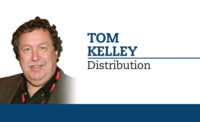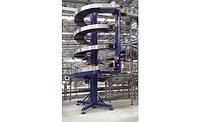Setting performance standards is essential for beverage operations
Constant change impacts standard levels

Beverage producers throughout the world are an excellent example of the constant change syndrome (CCS) caused by the frequency and magnitude of changes in the complex variables that are an integral part of the beverage market. The changes are basic and fundamental, and are not always under the producer’s control. Take any beverage and track the creation process, and it becomes clear that the materials, machinery and labor necessary for the process are driven by the forces of change.
Materials involved in the formulation or recipe of a beverage are changing in characteristics, quantity and compatibility with other ingredients. Again, changes constantly are being made in material type and its suitability to a particular beverage formula. As technicians finalize materials used in formulas, questions of quantity and quality will emerge, knowing that formula processes will create losses.
Knowing standard material usage for product formulas is essential because this determines sales prices, margins and profits. It is a matter of money. Keep in mind the producer might not be in a position to control how much or what material is required, but they nevertheless must control material loss in the process.
From an operations perspective, this is the tip of the iceberg in a complicated process. Producers must be able to replicate how a beverage is made using procedures that will minimize material losses. Losses will occur, but operators must ask, “What can be allowed, and can a reasonably constant level be established?” That level (and its set of conditions) is the standard or expected goal for that product to determine yield performance and costing.
In a practical application, the loss factor probably will be different for each individual or group of products. The approach for establishing and adhering to standard material loss levels is a critical starting point, especially for quality control and process technicians. How much material loss should be expected on each product every time it is produced?
Constant change syndrome
From an engineering viewpoint, CCS is occurring in machinery and equipment used to produce beverages. As a result, the standard volume, speed and expected output are constantly in flux. Experience, studies and observations have indicated packages, and particularly products, have different characteristics that can limit production line speeds and affect resulting output. Therefore, as raw materials and products change, equipment capacities and capabilities also change. These changes exemplify the need to adapt standard levels of production. As mentioned, when products change, packaging also might change, necessitating machinery and equipment modifications and/or replacement to adapt to variable conditions.
To keep pace with expanding SKUs, beverage packaging lines have become flexible in speed, packaging configuration and capability of running a variety of products. Even though speeds have increased, the diversity of containers and products also have limited them. That is why a standard level for each package configuration with its own variables and constraints is essential. Unless this approach is used, it is probable that an inaccurate standard cost basis will prevail.
With focus on raw materials (yield), product characteristics, packaging materials (usage) and line speed standards, other outside issues arise in which a producer might not have control over, such as SKU explosion, competition, compliance and technology advances.
In addition to raw/packaging materials and standard line speeds, a package production line should also contain a standard complement of labor for each package being produced under different operating conditions. Operating conditions are the key to setting standard levels of labor because labor handles the materials, operates the equipment and is responsible for line performance. Even though material losses and line lost time can directly affect the standard levels — against which actual performance and cost are measured — it is essential to periodically review operating conditions to ensure databases are accurate and representative. Remember, standard levels are variable and will change with conditions.
Setting standard levels and measurement for the bottom line is an adequate and accurate cost of loss information. In setting standards (expected, again), it is not sufficient to establish only the quantity, but the real cost of the actual loss must also be established. In raw material processing, the goal is maximum yield; in on-line packaging materials, the goal is complete usage; and on production line equipment, the goal is 100 percent of standard with no downtime.
Setting standard levels for cost and performance measurement is a dynamic function, which should be periodically performed by capable personnel with adequate data sources and accurate knowledge of operating conditions as this will greatly impact the authenticity of standard levels in one’s beverage operation. BI
Looking for a reprint of this article?
From high-res PDFs to custom plaques, order your copy today!







